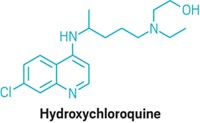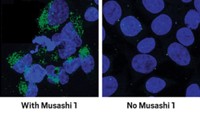Advertisement
Grab your lab coat. Let's get started
Welcome!
Welcome!
Create an account below to get 6 C&EN articles per month, receive newsletters and more - all free.
It seems this is your first time logging in online. Please enter the following information to continue.
As an ACS member you automatically get access to this site. All we need is few more details to create your reading experience.
Not you? Sign in with a different account.
Not you? Sign in with a different account.
ERROR 1
ERROR 1
ERROR 2
ERROR 2
ERROR 2
ERROR 2
ERROR 2
Password and Confirm password must match.
If you have an ACS member number, please enter it here so we can link this account to your membership. (optional)
ERROR 2
ACS values your privacy. By submitting your information, you are gaining access to C&EN and subscribing to our weekly newsletter. We use the information you provide to make your reading experience better, and we will never sell your data to third party members.
Biological Chemistry
Mutation in Zika virus protein linked to microcephaly
Single amino acid change made Zika virus more deadly to developing brain cells
by Bethany Halford
October 2, 2017
| A version of this story appeared in
Volume 95, Issue 39
Even though Zika virus was first identified in 1947, the infectious disease remained obscure until a 2015 outbreak in Central and South America. That’s when doctors noted a dramatic rise in infants with underdeveloped heads and brains (a condition known as microcephaly) born to women who were infected with the virus when pregnant. Now, researchers have found that mutation of a single amino acid in one of the Zika virus’s structural proteins, known as prM, may be responsible for causing microcephaly by enabling the virus to kill developing brain cells (Science 2017, DOI: 10.1126/science.aam7120). A team led by Cheng-Feng Qin of the Beijing Institute of Microbiology & Epidemiology and Zhiheng Xu of the Chinese Academy of Sciences compared three recent strains of Zika virus with one from 2010 and found the more recent versions to be deleterious or deadly to neonatal and fetal mice, whereas the 2010 virus was not. Biochemical sleuthing led them to discover that a serine residue in prM of the 2010 virus had mutated to an asparagine in the more recent strains. When the researchers made this single mutation to a virus that was otherwise identical to the 2010 strain, it was dramatically more deadly to neonatal mice than the unmutated version. When the researchers modified this asparagine to a serine in a 2016 version of the virus, it proved to be less deadly.





Join the conversation
Contact the reporter
Submit a Letter to the Editor for publication
Engage with us on Twitter